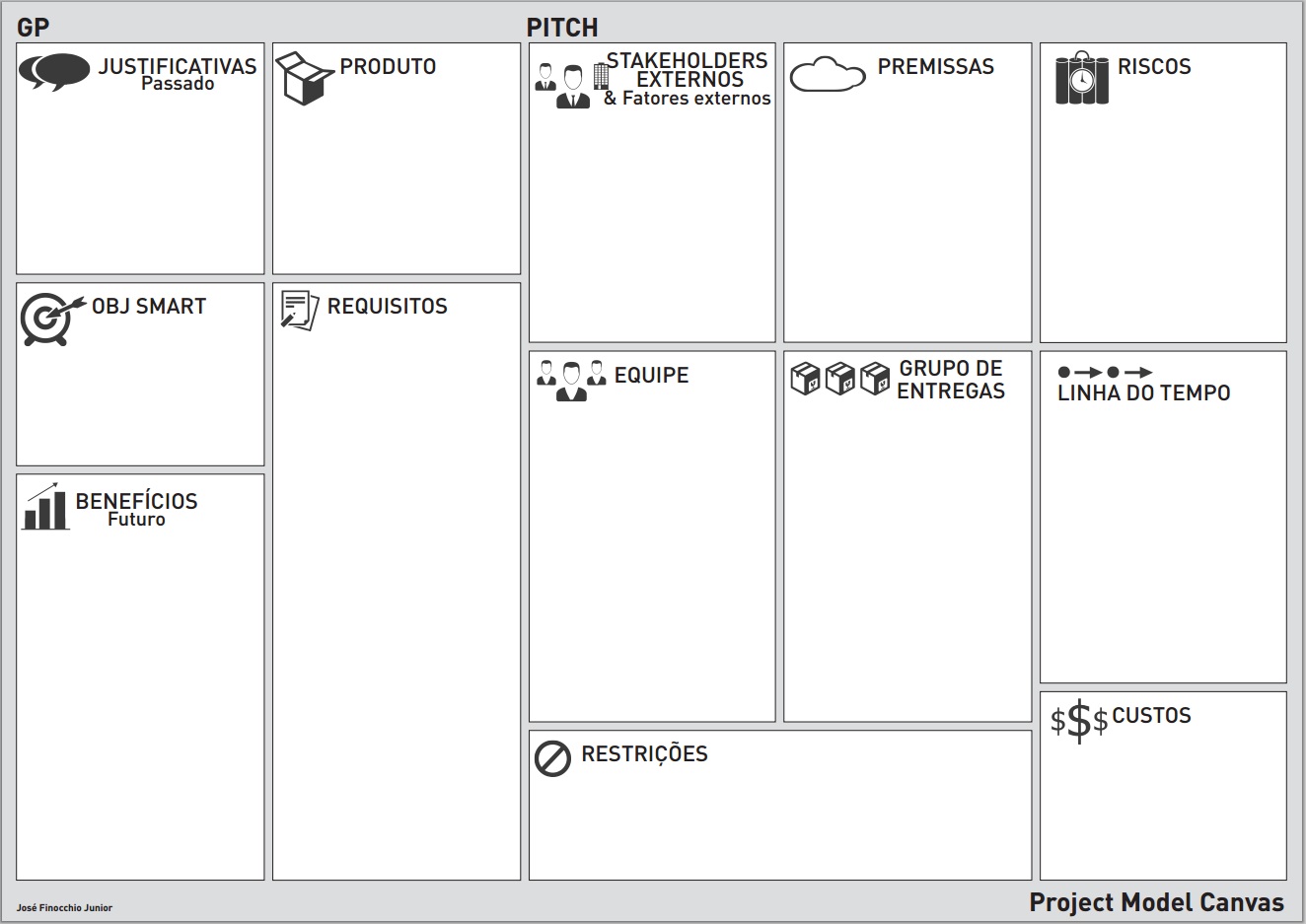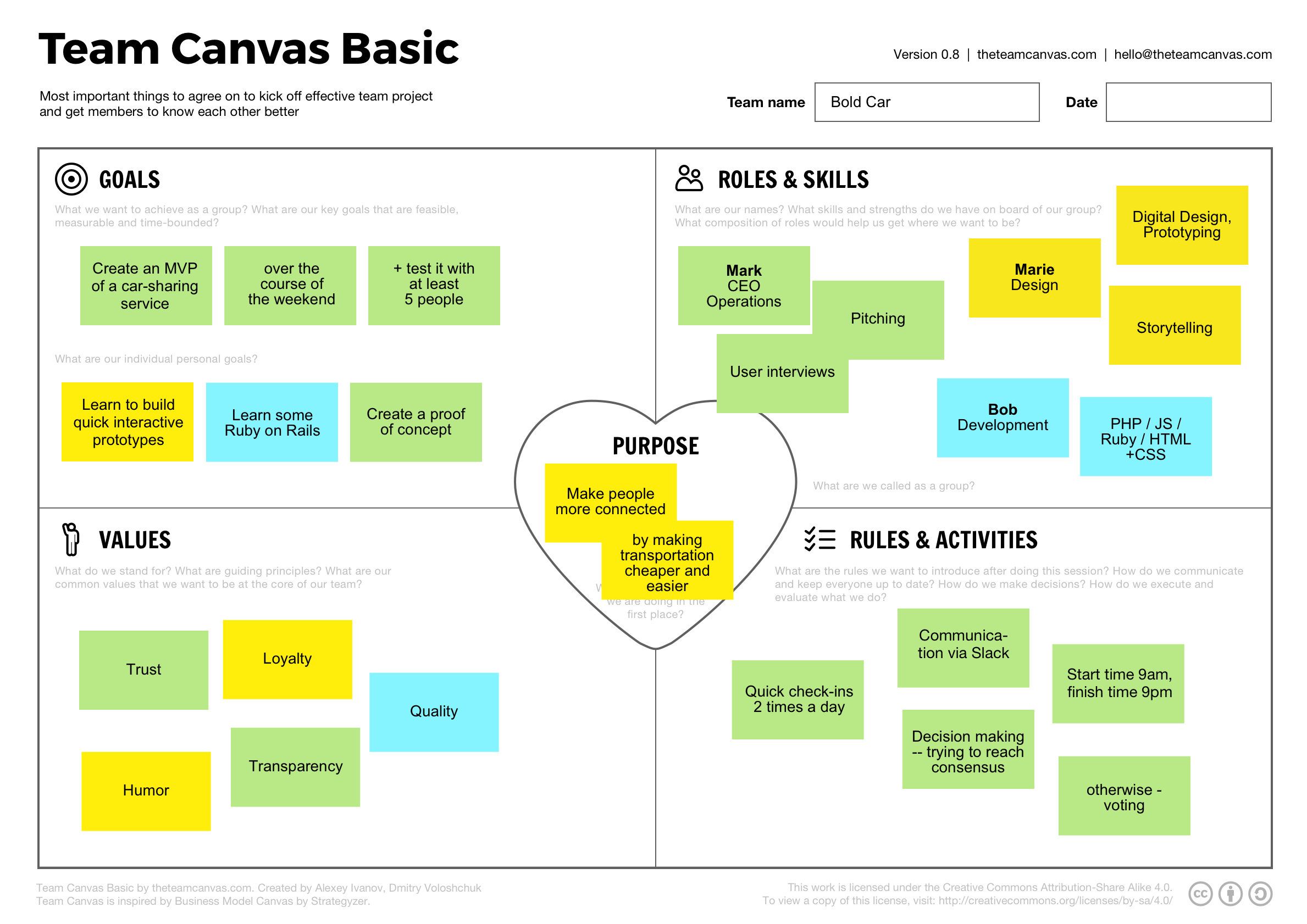

The three rows from top to bottom provide an appropriate level of detail for the various stakeholders and team members who will be engaged on the project. The draft canvas I've been experimenting with is laid out so that the rows are tailored to differing levels of strategic detail (the 'Altitude'), and columns to the focus of the information required (the 'Pillars'). When done well, it helps make relationships between information explicit, by virtue of where it is placed spacially and its proximity to neighbouring information. Unlike a written document, hidden away on a project folder or Basecamp, it’s easy to print or write on a wall for all to see. As a single sheet with constrained proportions it can provide a useful 'at a glance' overview.
It’s summative, avoiding unnecessary detail. 
It nevertheless retains some strong benefits: 2015 has almost certainly hit peak canvas, with colleagues around the office glazing over merely at mention of the format.

There are already an over-abundance of similar tools and techniques readily available. It's worth pointing out that Project Canvases are by no means a revolutionary approach.

Without a motivation that provides objective rationale to otherwise subjective design decisions, everything can be made instantly malleable by the fickle and transient whims of high ranking Swoop-n-Poopers. The most important aspect of any project is the meaning behind it.
THE PROJECT CANVAS HOW TO
Having the confidence to ask (and make a plan on how to answer) pertinent and practical questions can make all the difference. So a simple and transparent way to understand the lay of the land is essential. The only thing you know for certain at the start of a project is that you know absolutely nothing.
A repeatable approach to scope and plan discovery activities. Getting everyone on the same page quickly, with a common, shared and definitive point of reference can help refocus direction when required. It’s painfully easy to fall into the trap of making assumptions about pre-existing knowledge when onboarding new team members and stakeholders onto a project. Aligning the team and baselining knowledge. A cacophony of disparate, overlapping, ambiguous kick-off meetings with Account Managers, Product Owners, Project Managers, Creative Directors, all giving their own nuanced (and in many instances, completely alternate) focus on the undertaking at hand. Nothing is worse than trying to work from someone else's understanding of the brief. Something that would help address the following: I was interested in something that could help provide a strategically-minded UX Design team with a few critical pieces of information, as quickly and painlessly as possible. It was with this in mind that I’ve recently been experimenting with a Project Canvas as a means of making these details as explicit as possible at the start of a project.Įxisting solutions I’ve used previously always felt to have lacked the appropriate focus: Either too lofty in scale or scope to be practical (Stand up Business Model Canvas) or too granular and managerial to convey a higher purpose (See, well… every other project canvas). If digital agencies and organisations alike were more vigorous in ensuring every project was bound to them, they would likely see many more successful outcomes. Without these pillars, everything we put into our work suffers from a distinct lack of foundation risking collapse under even the slightest interrogative gust of wind. So it should come as no surprise that being able to concisely articulate the purpose, audience, vision and goals of a project is crucial. It's not always as easy as it sounds is it. If I were to ask you four simple questions about the project you are working on right now, they would be easy to answer, right?








 0 kommentar(er)
0 kommentar(er)
